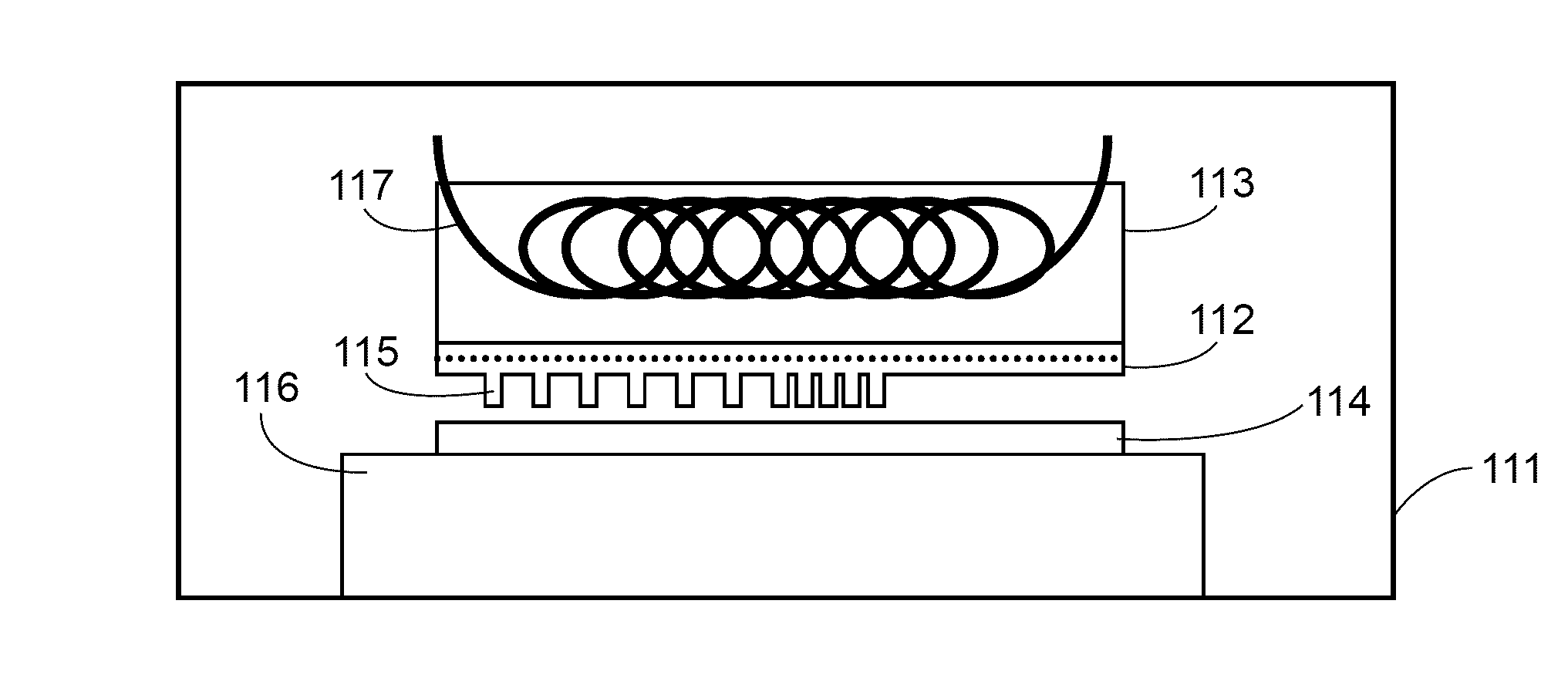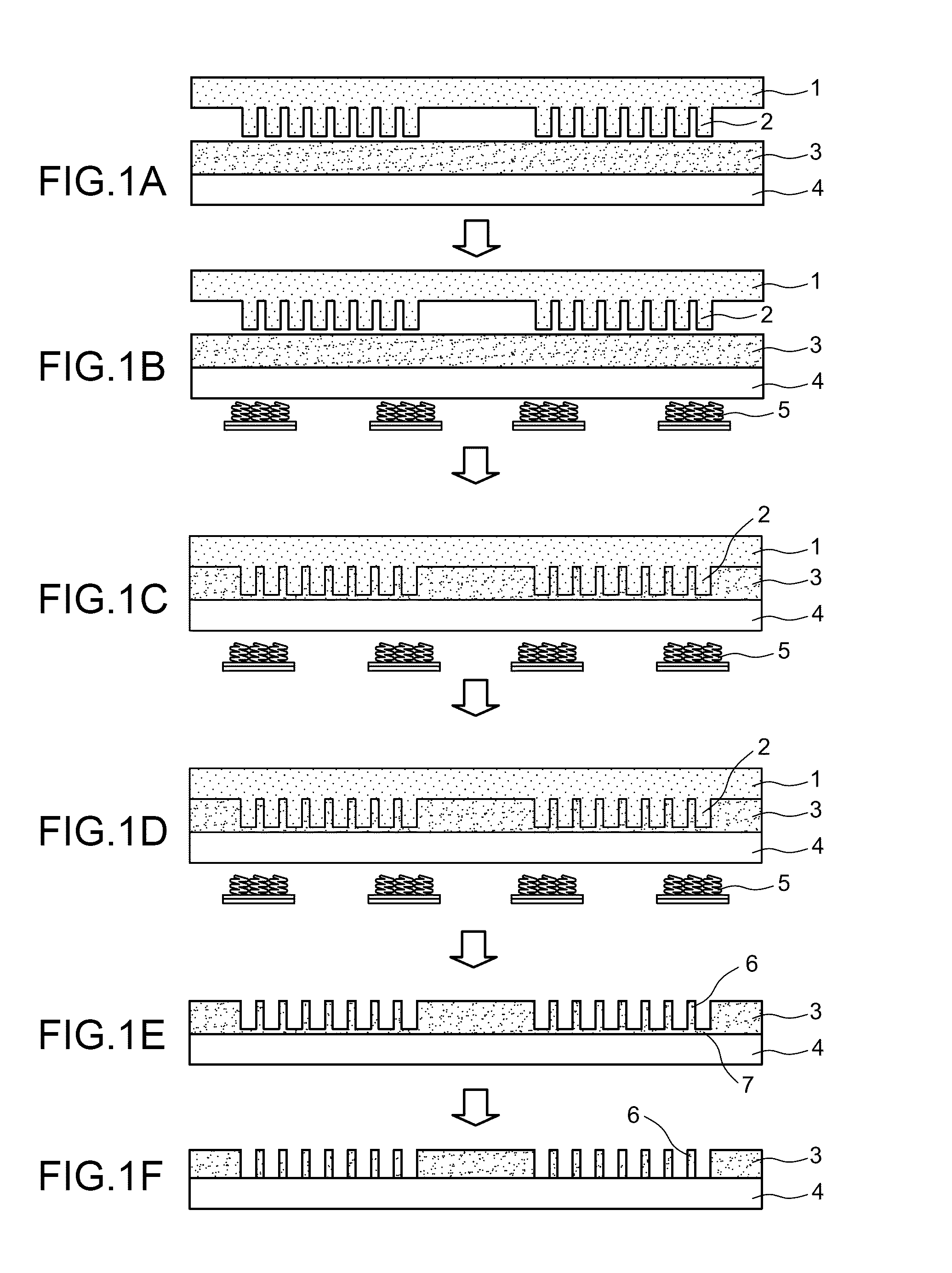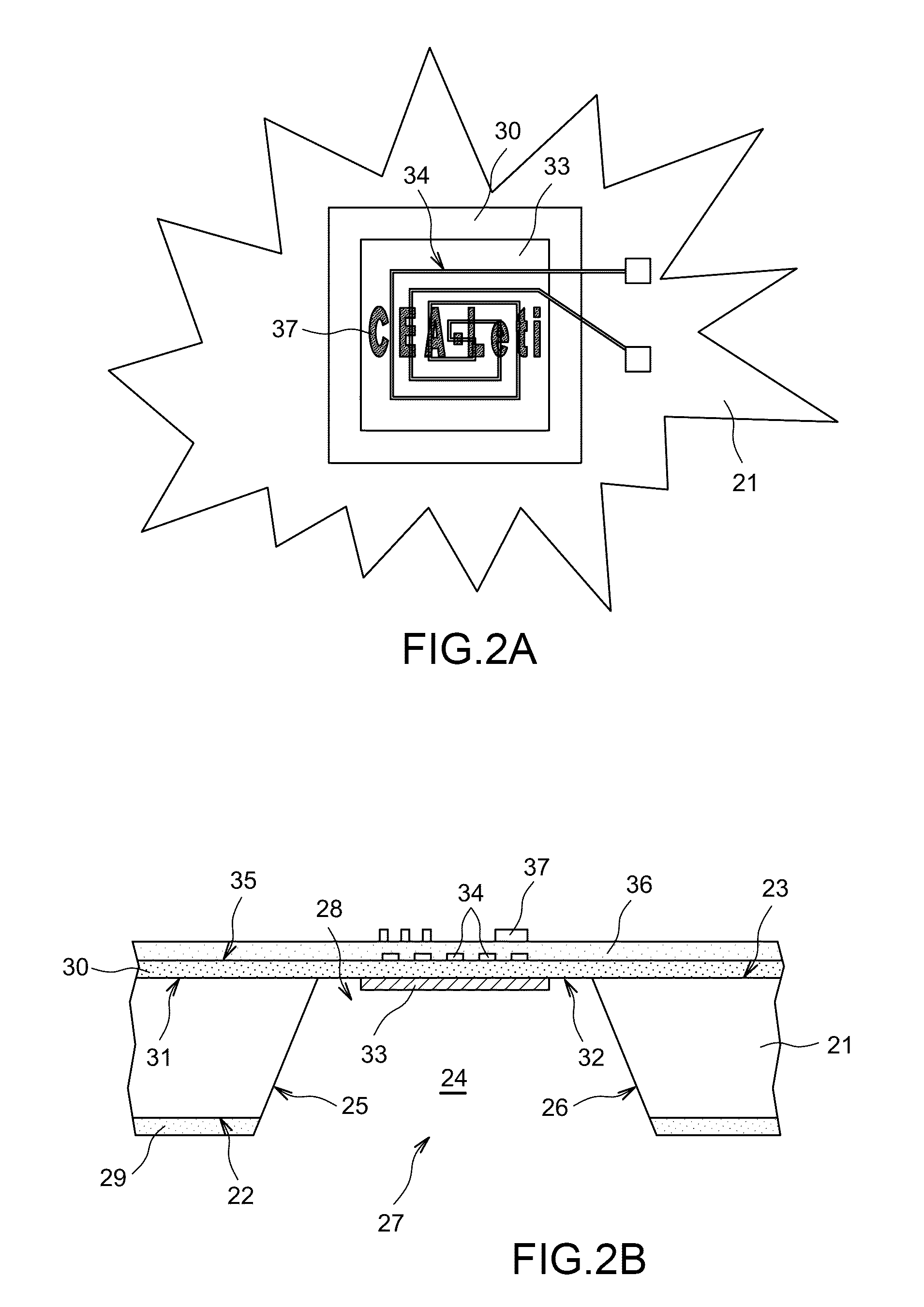Mold for thermal nanoimprint lithography, process for fabricating the same, and nanoimprint process using the same
- Summary
- Abstract
- Description
- Claims
- Application Information
AI Technical Summary
Benefits of technology
Problems solved by technology
Method used
Image
Examples
second embodiment
[0145]We shall begin by describing for convenience, the mold according to the invention which is illustrated in FIGS. 2A and 2B.
[0146]This mold comprises a substrate (21) including a first main surface (22) and a second main surface (23).
[0147]In FIG. 2B, the first (22) and second (23) main surfaces are planar, parallel and horizontal. The first main surface (22) may therefore be defined as a lower surface, while the second main surface (23) may be defined as an upper surface. It is quite understood that this arrangement of the first main surface (22) and of the second main surface (23) is only given as an example and that other arrangements of both of these surfaces may be contemplated.
[0148]The substrate (21) may thus have the shape of a plate or platelet, wafer, comprising two planar, parallel, for example square, rectangular or further circular surfaces (22, 23).
[0149]The thickness of the substrate (21), i.e. the distance between the first main surface (22) of the substrate (21)...
first embodiment
[0274]We shall now describe the mold according to the invention which is illustrated in FIG. 9.
[0275]For the sake of simplification and coherence, the same references as those used in the figures which describe the second embodiment have been used in FIG. 9.
[0276]This mold comprises a substrate (21) including a first main surface (22) and a second main surface (23).
[0277]In FIG. 9, the first (22) and second (23) main surfaces are planar, parallel and horizontal. The first main surface (22) may therefore be defined as a lower surface, while the second main surface (23) may be defined as an upper surface. It is quite obvious that this arrangement of the first main surface (22) and of the second main surface (23) is only given as an example and that other arrangements of both of these surfaces may be contemplated.
[0278]The substrate (21) may thus have the shape of a plate or platelet (wafer) comprising two planar, parallel, for example square, rectangular or further circular surfaces (...
third embodiment
[0326]In a third embodiment, illustrated in FIG. 11C, one or more sources (117) are integrated into the plate support (116).
[0327]Depending on the equipment used and its complexity, one of these embodiments or any combination of two or three of these embodiments may be applied.
[0328]The mold according to the invention may be used in a method for making a substrate comprising a surface nanostructured by a thermal nanoimprint lithography technique.
[0329]Such a method may for example comprise the following successive steps:
[0330]a) a layer of an organic resin or of a mineral material with a low melting temperature is deposited on a planar surface of a substrate;
[0331]b) the organic resin is heated up to a temperature greater than or equal to its glass transition temperature Tg or its melting temperature, or the mineral material is heated up to a temperature greater than or equal to its melting temperature and the organic resin or liquid mineral material layer is printed with the mold a...
PUM
| Property | Measurement | Unit |
|---|---|---|
| Temperature | aaaaa | aaaaa |
| Size | aaaaa | aaaaa |
| Density | aaaaa | aaaaa |
Abstract
Description
Claims
Application Information
 Login to View More
Login to View More - R&D
- Intellectual Property
- Life Sciences
- Materials
- Tech Scout
- Unparalleled Data Quality
- Higher Quality Content
- 60% Fewer Hallucinations
Browse by: Latest US Patents, China's latest patents, Technical Efficacy Thesaurus, Application Domain, Technology Topic, Popular Technical Reports.
© 2025 PatSnap. All rights reserved.Legal|Privacy policy|Modern Slavery Act Transparency Statement|Sitemap|About US| Contact US: help@patsnap.com



